Reports
May 23, 2025
2024 Event Report: Kids’ Cinema: The Summer Vacation of 2024
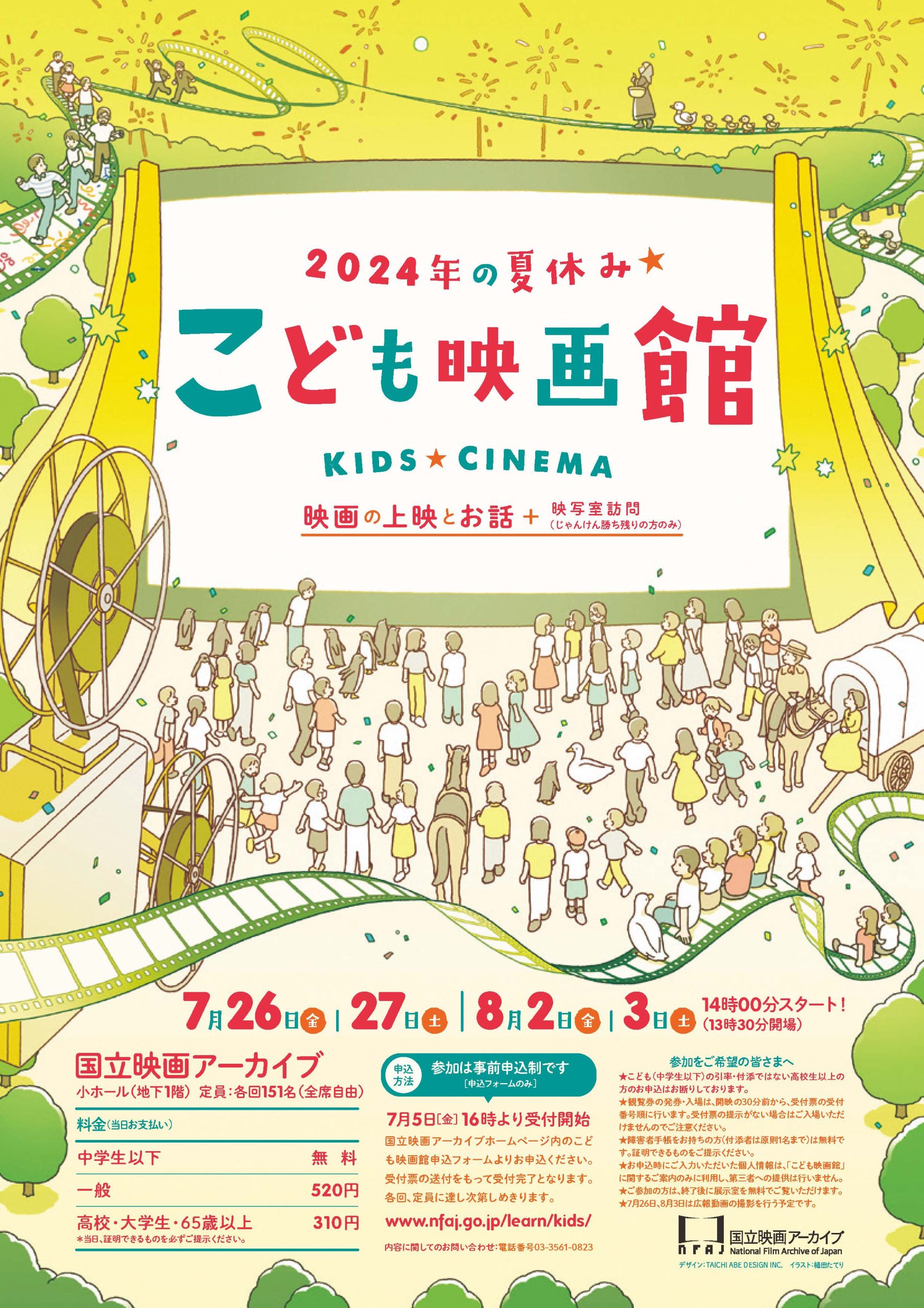 Ended
Ended 
Kids’ Cinema: The Summer Vacation of 2024
National Film Archive of Japan
Dates July 26, July 27, August 2, and August 3, 2024
- Images
Index
The National Film Archive of Japan hosted Kids’ Cinema: The Summer Vacation of 2024, a special event for children to enjoy films. Running annually since 2002, this year the event took place over four days on Friday and Saturday, July 26–27 and August 2–3. A total of 394 visitors attended, including children through junior high school age and their families.
The four-day program featured different films each day. Starting with Day One: a collection of Japanese short animations titled “Animation Expression: Materials and Music”; Seven Days War(『ぼくらの七日間戦争』), Sugawara Hiroshi, 1988, starring Miyazawa Rie, themed around “Don’t Let Dishonest Adults Push You Around!”; the Soviet film Dom na Trubnoi (The House on Trubnaya Square), Boris Barnet, 1928, presented as “What Does It Mean to Work? A Big City Workplace Comedy”; and the American Western The Covered Wagon, James Cruze, 1923, introduced as “Let’s Enjoy the Great American West and Classic Western Action!”
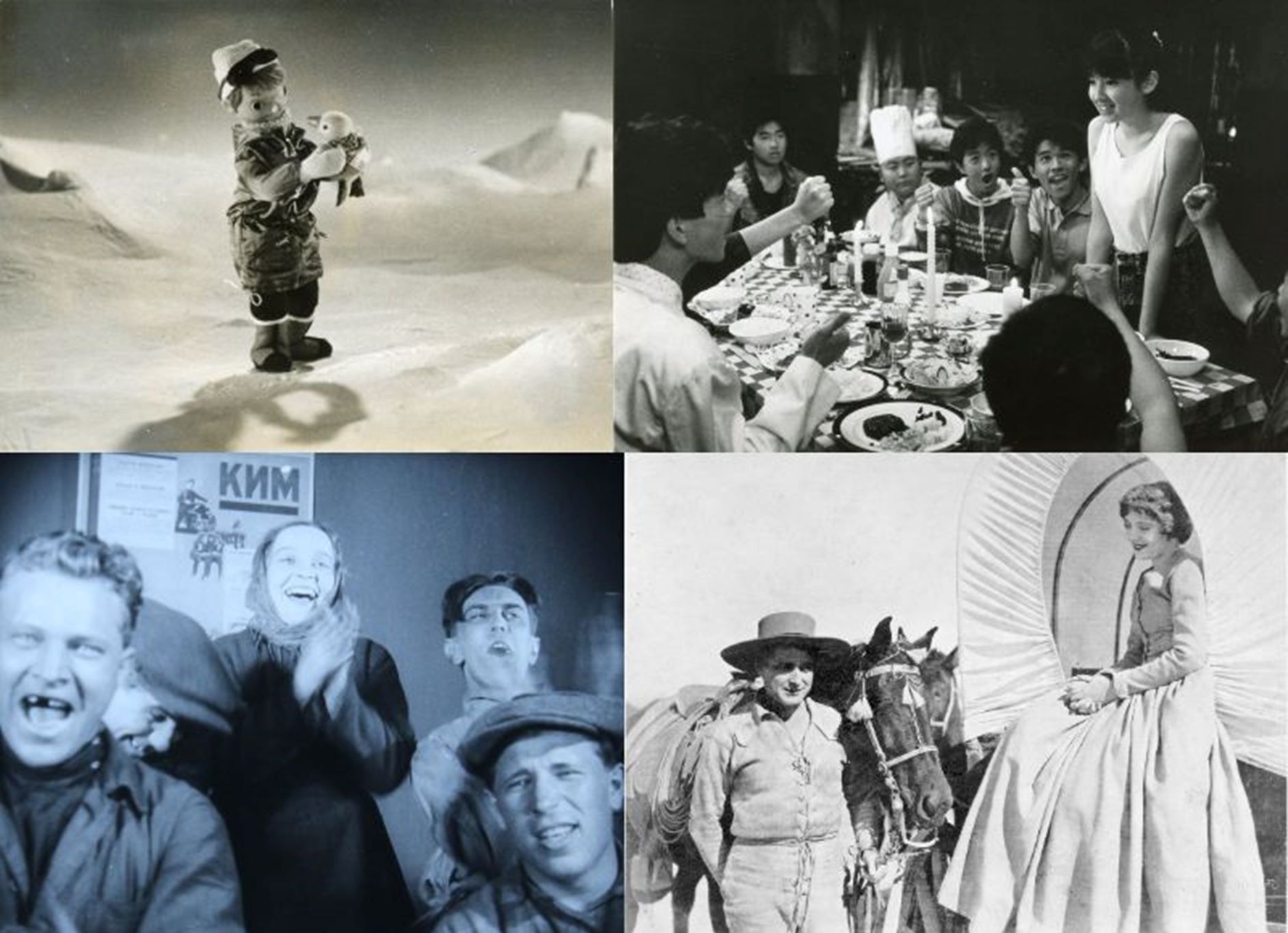
Before each screening, archive staff explained the basics of film and film projectors—a learning opportunity for both children and adults in today’s era of digital screening. On the first and last days, two special activities Let’s Share Our Thoughts and Let’s Try Being a Benshi Narrator! followed the screenings. In addition to view, children could share their thoughts about the films, hear other children’s views, and even create dialogue for the animal characters together, making it a truly interactive film experience.
Enjoying Film Together on Screen
The National Film Archive of Japan is located in Kyobashi, within walking distance of Ginza and Tokyo Station. As Japan’s only national institution dedicated to film, it carries out a wide range of activities including preserving films and film-related materials, screening films, and hosting exhibitions.
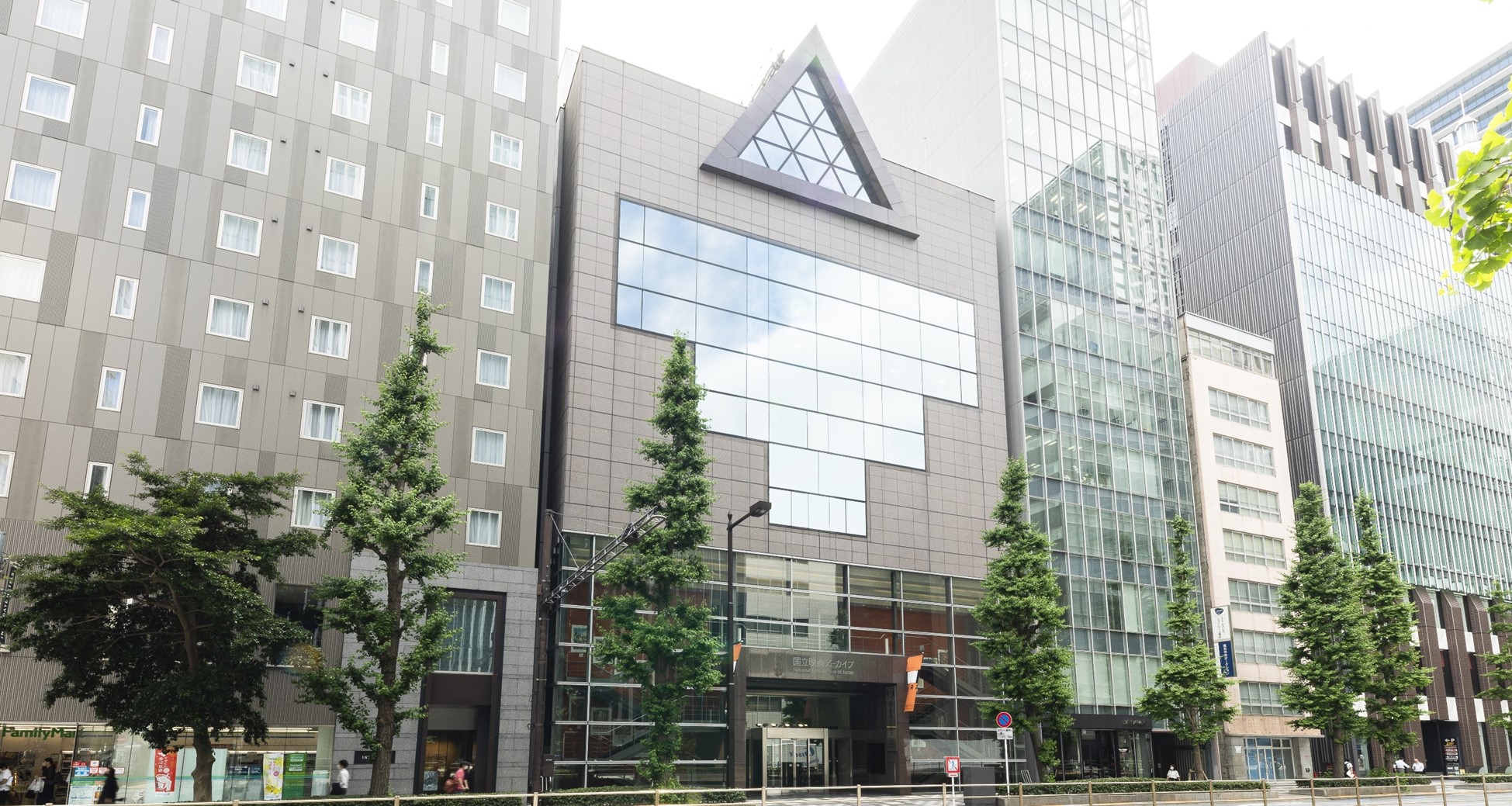
The National Film Archive of Japan is easily recognizable by its distinctive triangular roof. The Kids’ Cinema screenings took place in the small hall on the first basement floor. Staff decorated the stairway and reception lobby leading to the venue to welcome young visitors. At reception, along with program flyers and questionnaires, children received special bookmarks made from actual film strips and NFAJ Self-Guides for use in the permanent exhibition on the 7th floor.
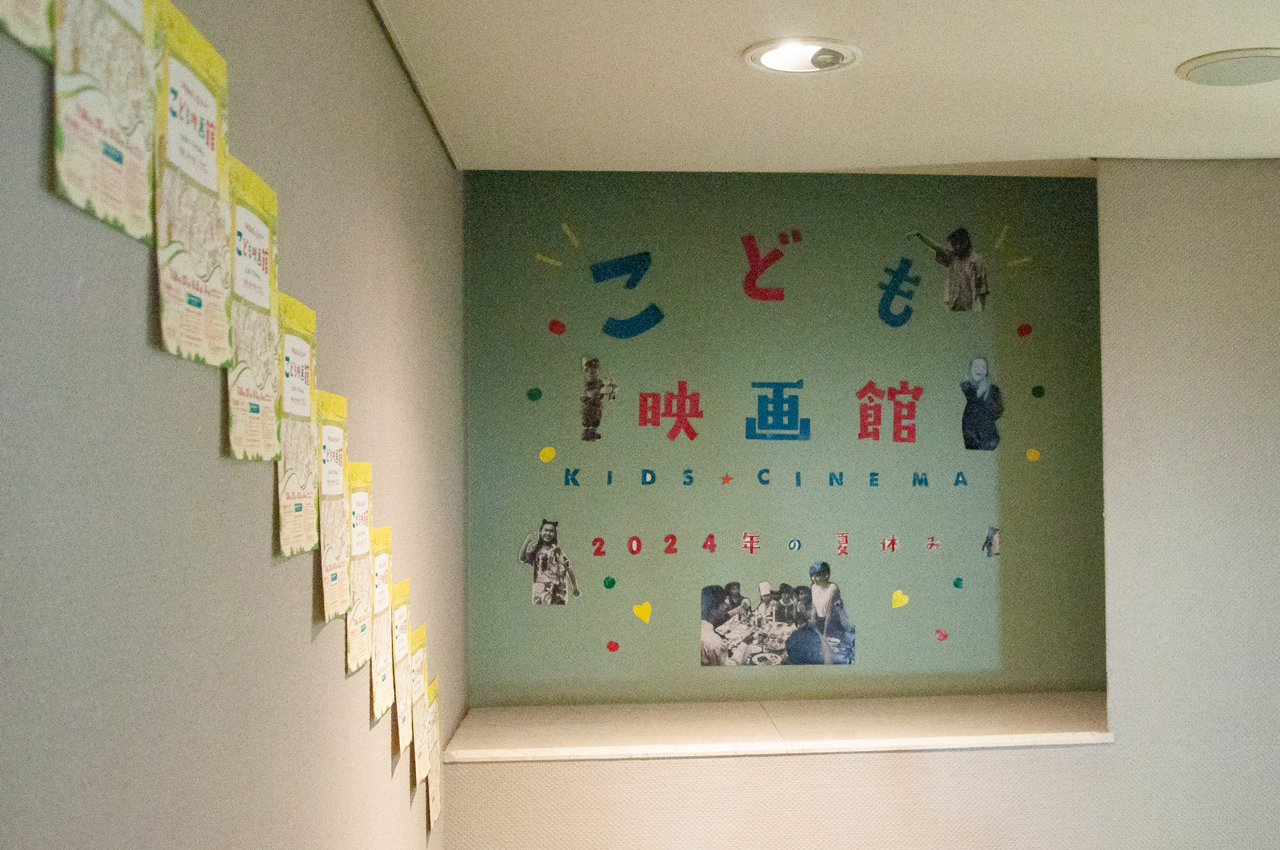

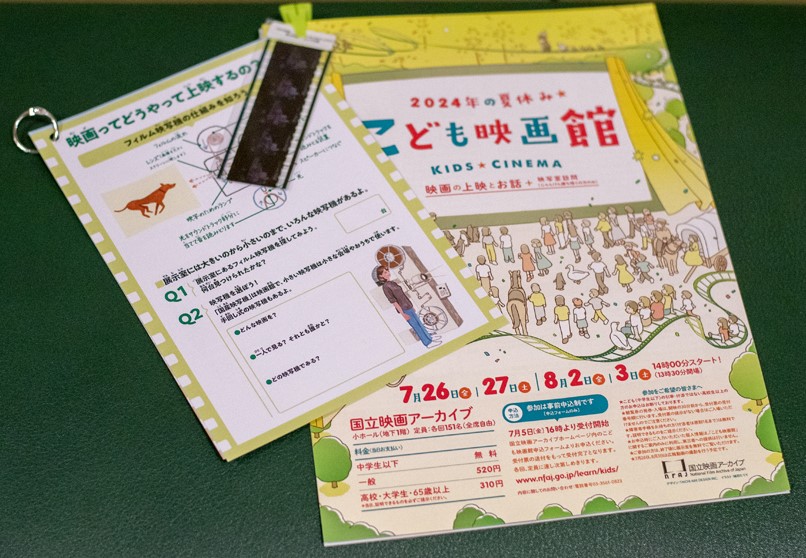
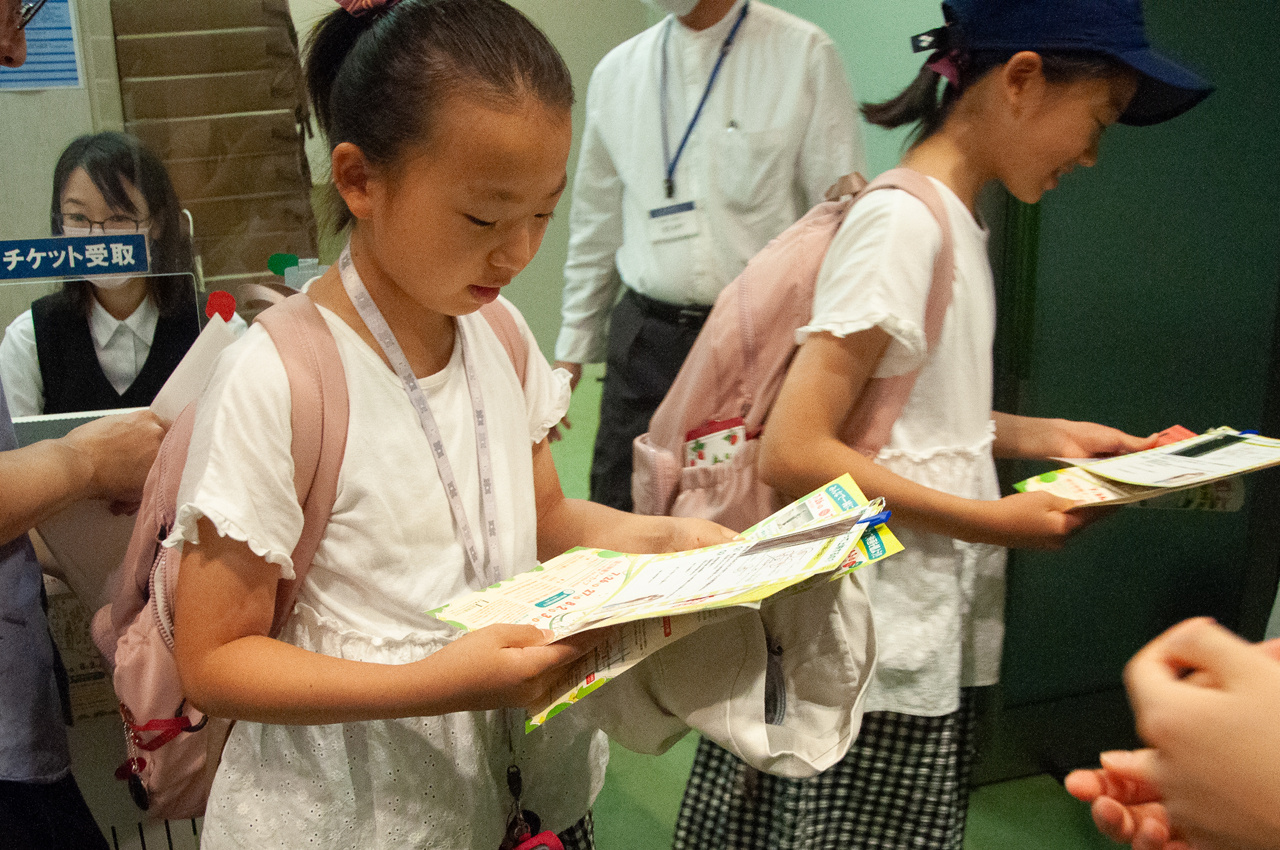
Inside the hall, children who arrived early waited eagerly for the films to begin. Some were regular visitors who come every year, while others were experiencing the National Film Archive for the first time. The hall buzzed with excitement and anticipation.
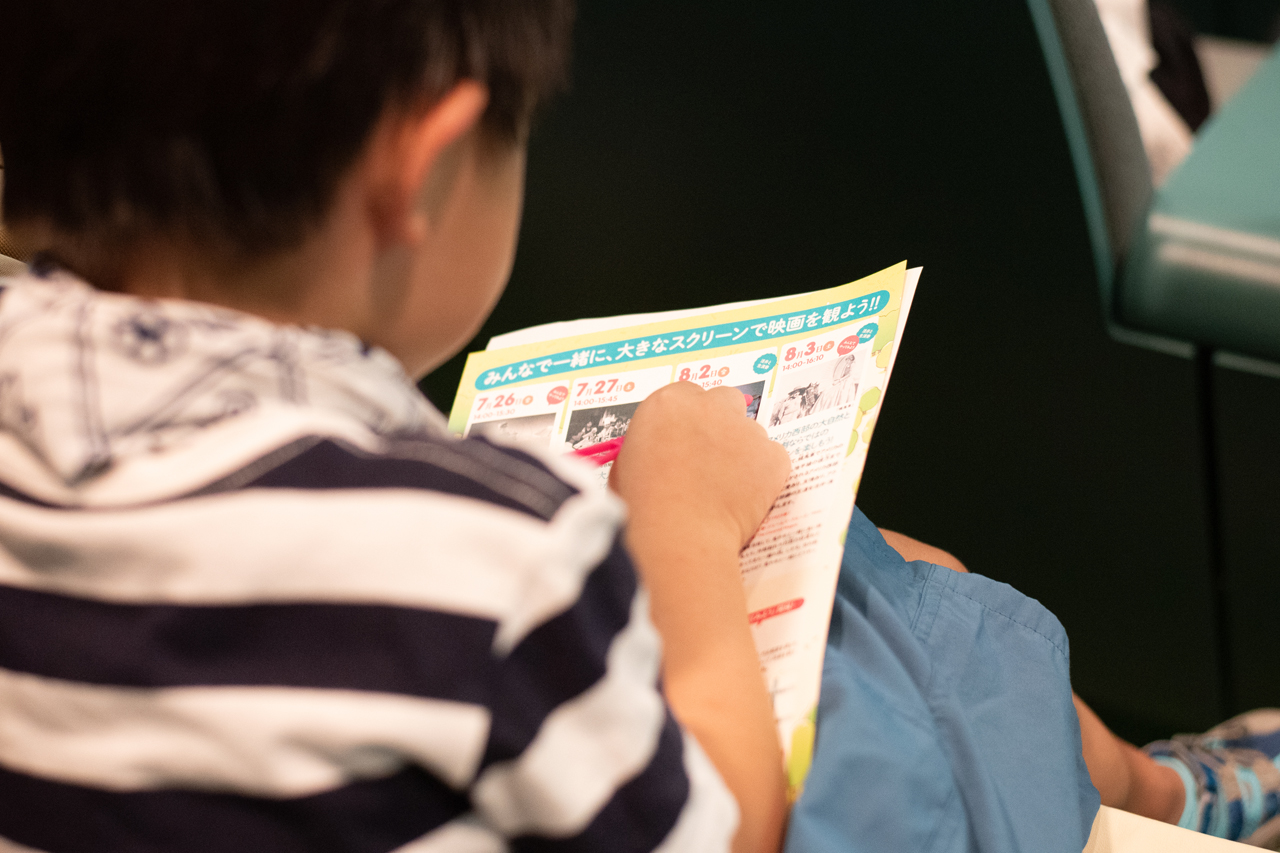
When showtime finally arrived, staff gave an introduction about the film and the film format, using visuals to make the explanations easy to understand. During the explanation about film, children held their film bookmarks up to the light, carefully examining each frame.
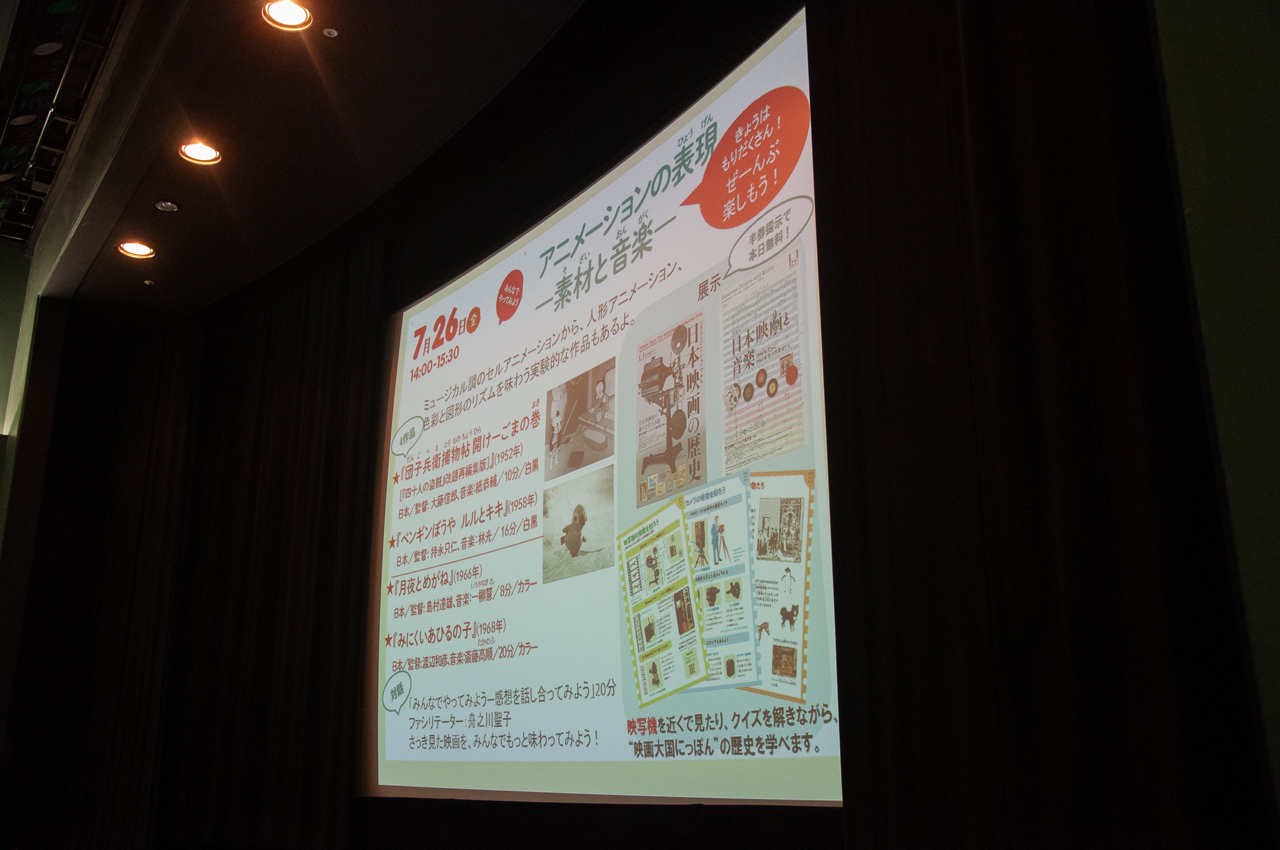
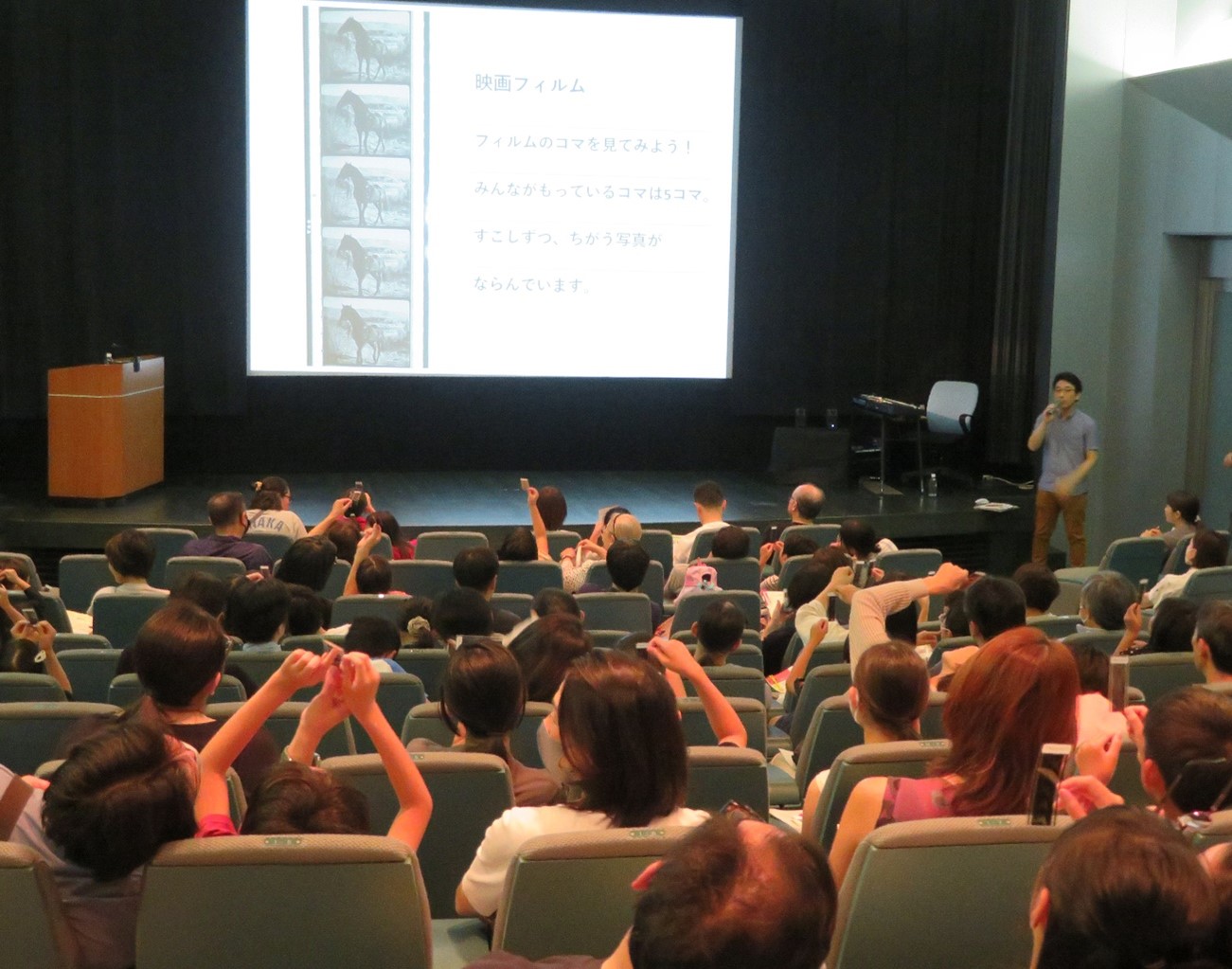
After the introduction, the lights dimmed and the film began. Special booster cushions were available so even the smallest children could see over the heads in front of them and enjoy the world of cinema spreading across the screen. While some parents might worry about their little ones crying during regular screenings, at Kids’ Cinema, families could relax—this was a space made for children. But as soon as the movie started, the children were completely drawn in. Any worries the parents had quickly faded as the kids seemed fully immersed in the film.
The films Dom na Trubnoi and The Covered Wagon are silent films with no recorded sound. At Kids’ Cinema, silent films are shown each year as they would have been when first released—with live musical accompaniment and a benshi narrator. Standing beside the screen, the benshi brings the story to life, providing emotional narration and different voices for each character, a unique film presentation style that developed in Japan. Though these films are nearly 100 years old, both children and adults were completely captivated. While silent films often use intertitles to explain the story, having a benshi narrator means even children who can’t read yet can fully enjoy the film. There were also moments that made this truly feel like Kids’ Cinema. During Dom na Trubnoi on day three, there’s a scene where audience members eagerly applaud to hurry the start of a play. The benshi narrator, Nanako Yamauchi, invited everyone in the hall to join in the clapping. Children and adults alike applauded along with the audience in the film, feeling as if they had stepped right into the movie world.
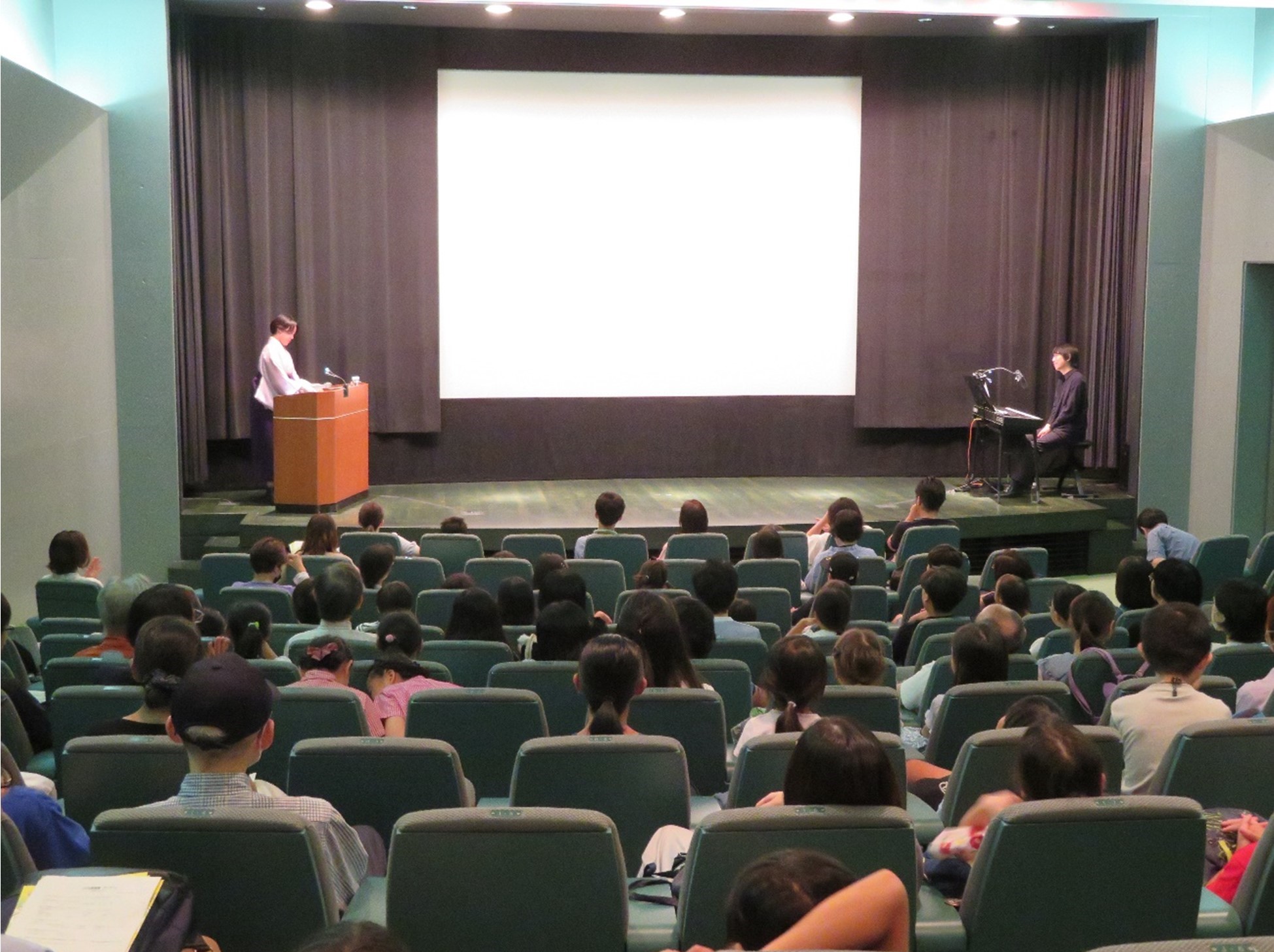
Thinking, Listening, and Talking About Film
This year introduced new participation activities after the screenings on the first and last days. On day one, Let’s Share Our Thoughts focused on The Ugly Duckling (『みにくいあひるの子』, 1968), one of the short films shown. With support from a facilitator, children shared their thoughts on the film. While the activity aimed to show children how different people can see the same film differently, staff were amazed by how eagerly the children raised their hands and shared thoughtful observations—from story elements to visual expression—using their own words and listening intently to others’ perspectives.
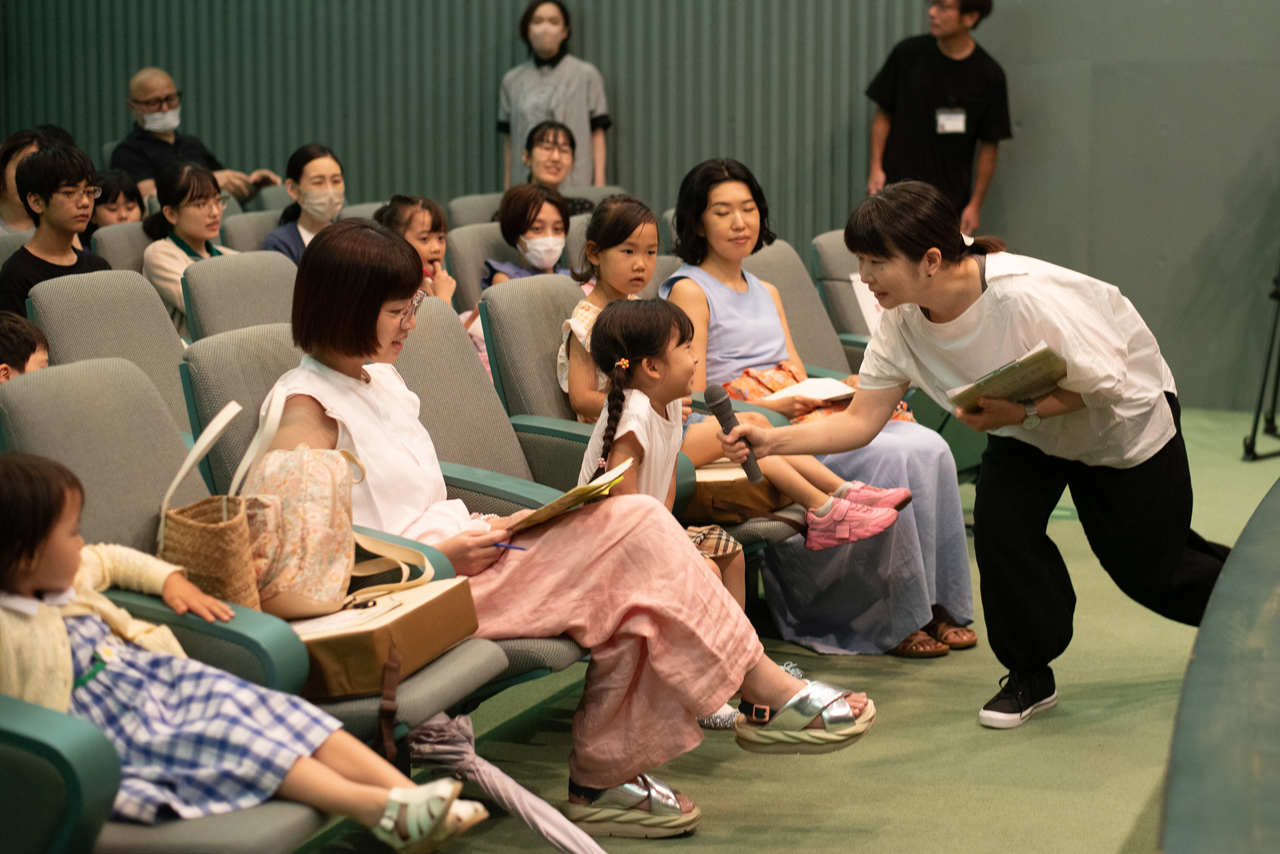
On the final day, Let’s Try Being a Film Narrator invited visitors to create voices for The Covered Wagon. After watching the film, everyone in the audience worked together to create dialogue for a scene where horses, cattle, and people cross a wide river. To develop their lines, children and adults alike imagined the dry prairie air and the feel of the river water, deeply immersing themselves in the world of the western. The event concluded with a special end credit roll created by the National Film Archive of Japan featuring all participants’ names. Seeing their names on screen for the first time gave everyone a taste of being not just film viewers but film creators—perhaps inspiring some future filmmakers among them.
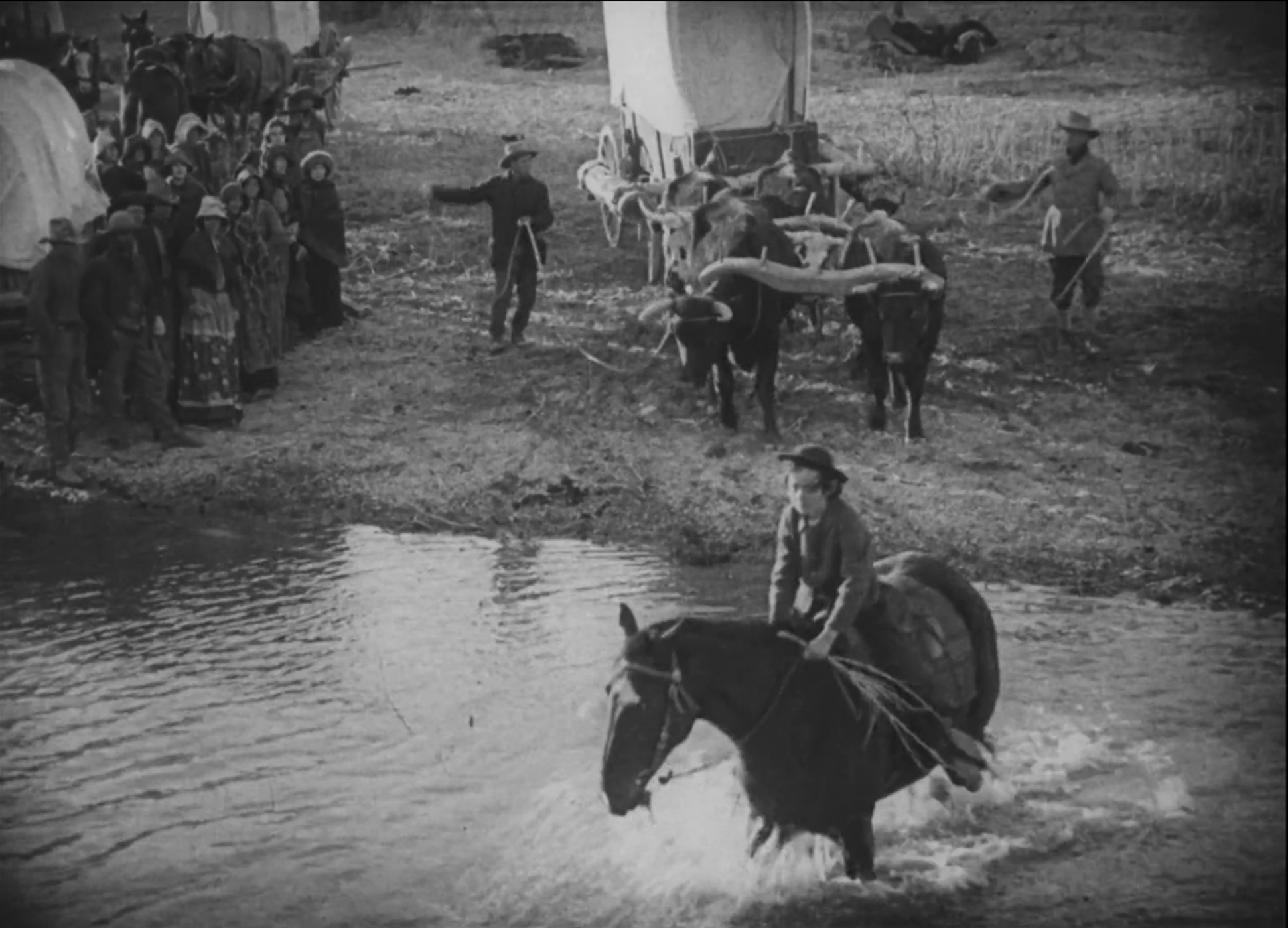
These two days were also documented on video to serve as a reference for future film events.
*Offered in Japanese language only
Exploring and Learning Through Film Materials
After each day’s screening, Kids’ Cinema participants could visit the exhibition room on the 7th floor featuring film-related materials, free of charge. The NFAJ Self-Guide for the permanent exhibition “Nihon Eiga: The History of Japanese Film” included carefully designed questions to help children explore the exhibits in detail. Children eagerly worked to complete activities like counting projectors and finding hidden animals in the display materials.
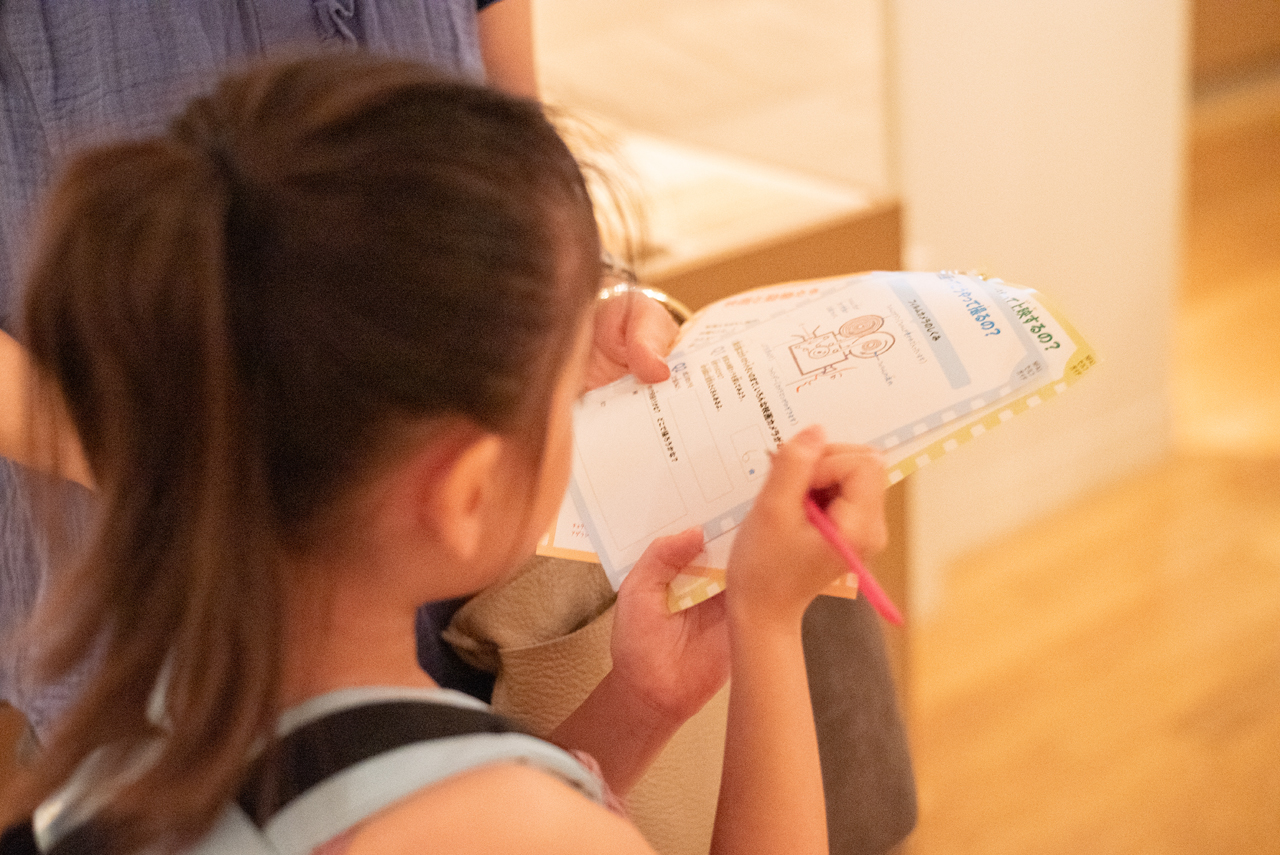
A special event for these days included staff demonstrations of film projectors. Both children and adults listened intently as staff showed the inner workings of vintage Japanese projectors, with children asking many surprising questions from their unique perspectives. Though most children and staff were meeting for the first time and came from different generations, film brought them together in moments of connection throughout the day.
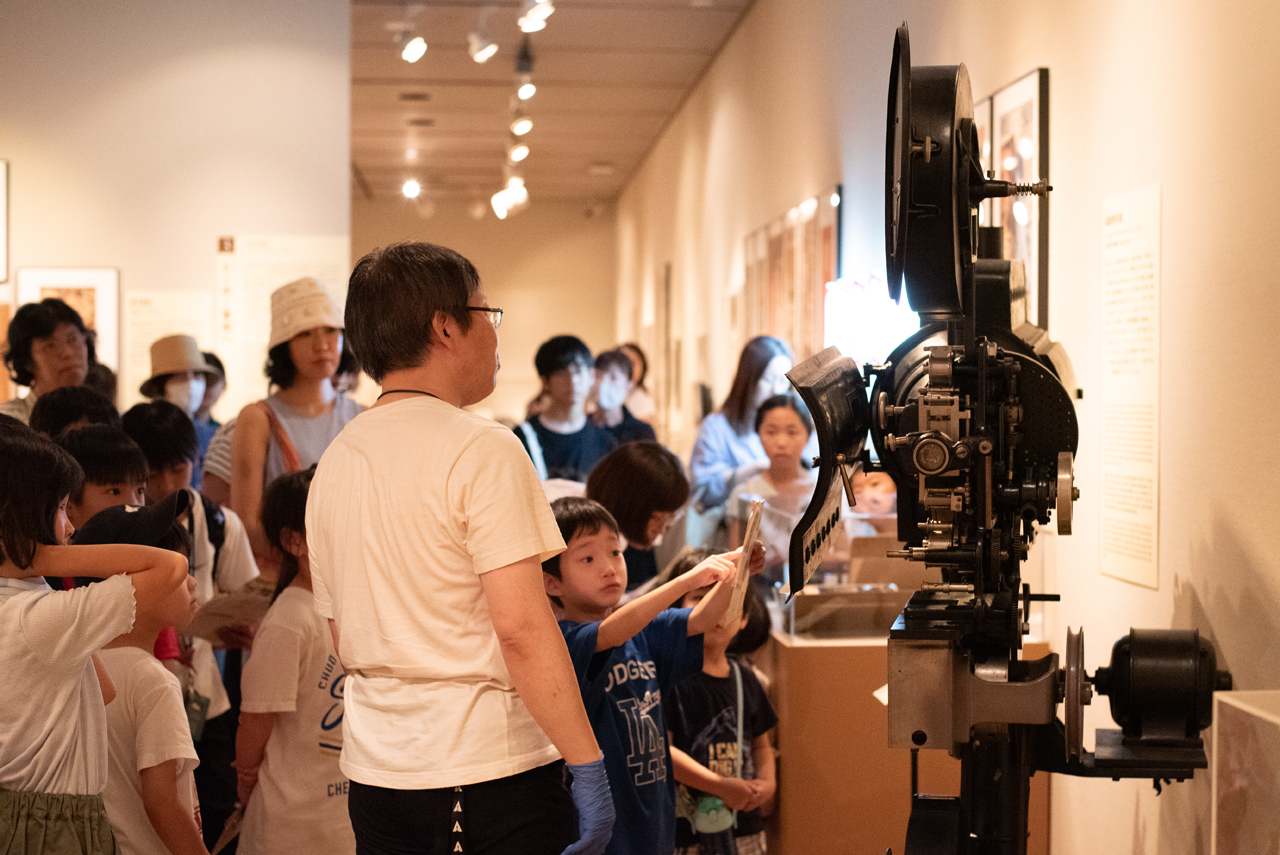
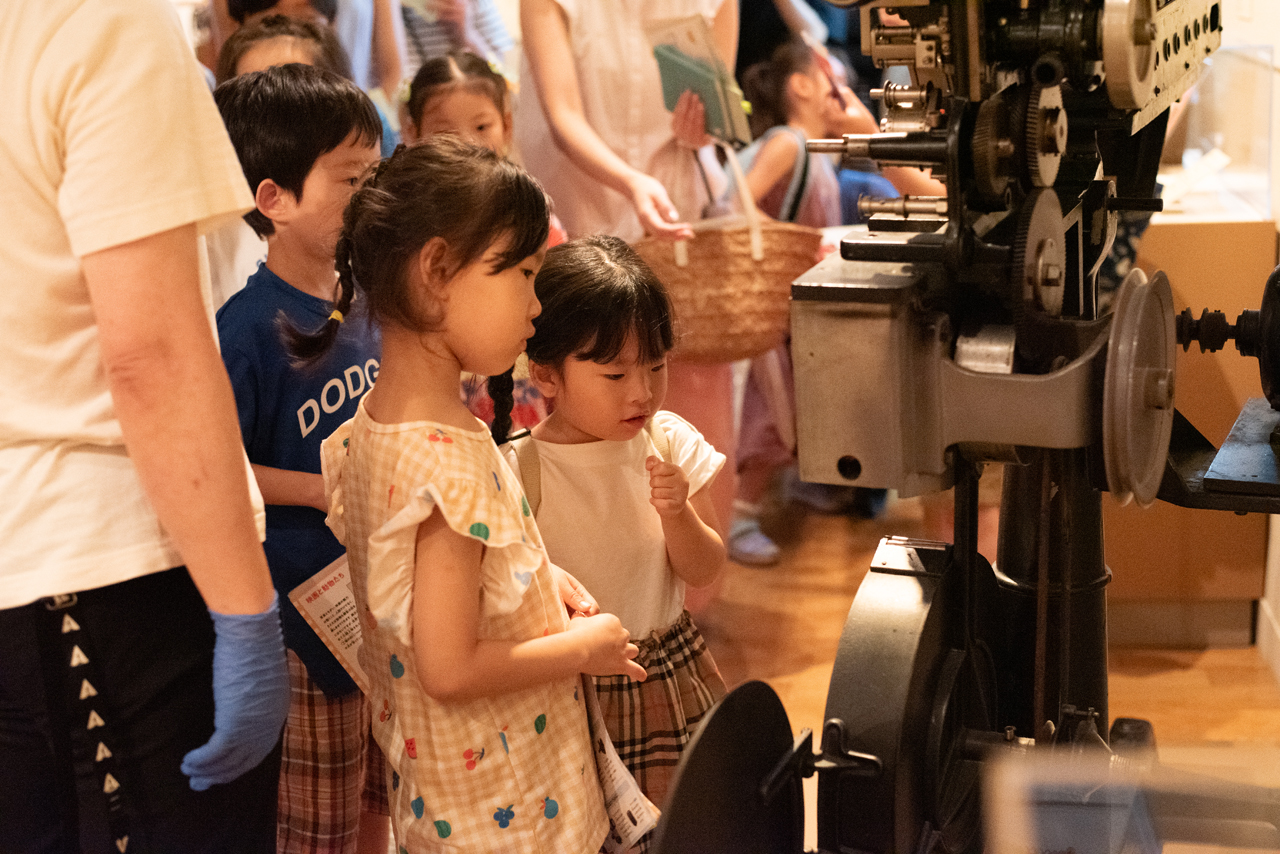
Kids’ Cinema: The Summer Vacation of 2024 showed us both children’s remarkable ability to engage with films from decades or even a century ago, and the timeless appeal of cinema itself. This program has been running for over 20 years now. Recently, university students who had attended as elementary school children returned to the National Film Archive of Japan as museum interns. We look forward to seeing how this year’s young participants might continue their journeys with film in the future.
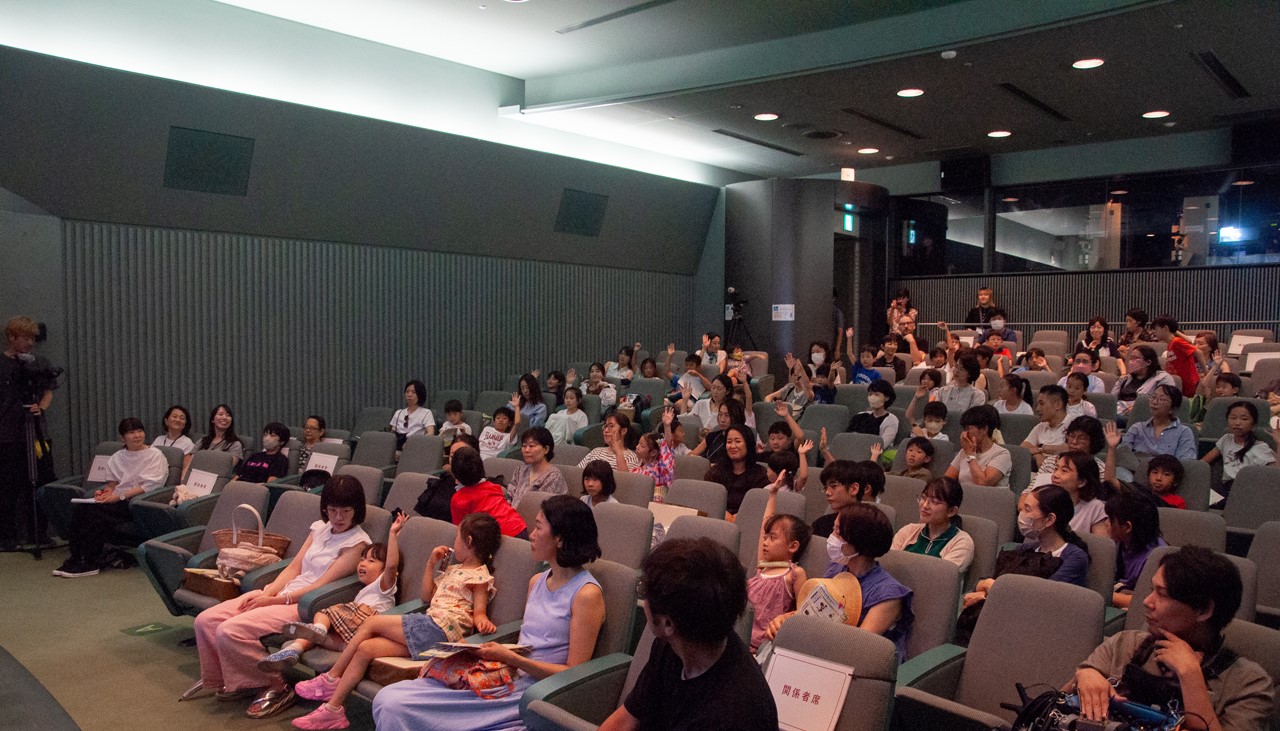
Editing: The National Film Archive of Japan
Photo: haruharehinata
* Excluding photos provided by the National Film Archive of Japan